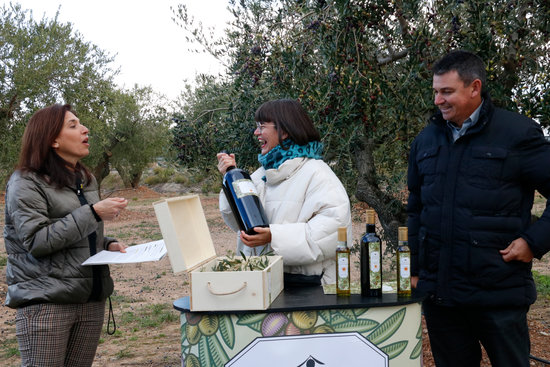Olive oil harvest has begun as mixed fortunes predicted for producers
Siurana hopes to double olive oil production, whilst Les Garrigues is expected to only manage half of its productive potential

The olive oil harvest, stretching from November to March in Catalonia, has begun. There are hundreds of varieties of olives, with the Picudo, Hojiblanco, and Picual being very common in Catalonia producing fantastically fruity oil for both locals and to be exported.
Nevertheless, certified olive producers Siurana and Les Garrigues are expected to have mixed fortunes this harvest season, with the former expecting to double production and the latter to manage just half of its productive potential.
Olive oil farmers will lay giant nets under a tree before shaking and beating the tree to dislodge the fruit using sticks and polls. The nets of good olives are collected and emptied into a trailer, where they will then be separated from dirt, leaves, and stones in machines and conveyor belts.
The olives are ground to form a paste and mixed together before being heated to 32C (89F), passed through a centrifuge to separate the liquid and to store the oil in huge temperature-controlled stainless steel tanks, and after a few weeks, it is bottled.
Catalonia is renowned for its top-quality olive oil, and throughout winter there are often olive oil festivals held across the country.
Contrasting fortunes for Catalonia's primary olive oil producers
It is set to be a mixed harvest for certified Catalan olive oil producers Siurana and Les Garrigues.
DOP (a certificate that denotes the quality of a product in a particular area) Siurana, following one of its worst harvests on record in Winter 2018-19 producing 2.5 million kilos of olive oil, is looking at doubling its harvest this year.
The producer also predicts a year of ''balanced, aromatic and fruity oil,'' as Siurana will benefit from the good forecasts after a difficult year marked by fires and floods. 5,000 farmers work in the Siurana region which covers Tarragona, Baix Penedès and part of Ebre, and three million trees will be cultivated.
However, fortunes are not set to be so positive for fellow DOP Les Garrigues, who are set to only produce half of their productive potential at three million kilos instead of six or seven million.
Following a harvest that ended in the lowest prices for olive oil in the last five years, olives are harder to come by this year, despite recent rain that has helped olive trees.
The rain has come a lot later than last year, and the initial summer drought due to a rainless summer means that a lot of the olives have been lost. Recent rain will ''alleviate the accumulated drought, but we must take into account that the climate is more extreme and we are passing between hot and cold,'' warned president Enric Dalmau.
The floods that affected some areas of Les Garrigues have also caused damage to specific areas with olive trees that have been torn out of the grounds.
With regards to prices, Dalmau considers that it is too early to predict how they will develop. ''We do not know how it will evolve, but initially prices are low,'' he added.